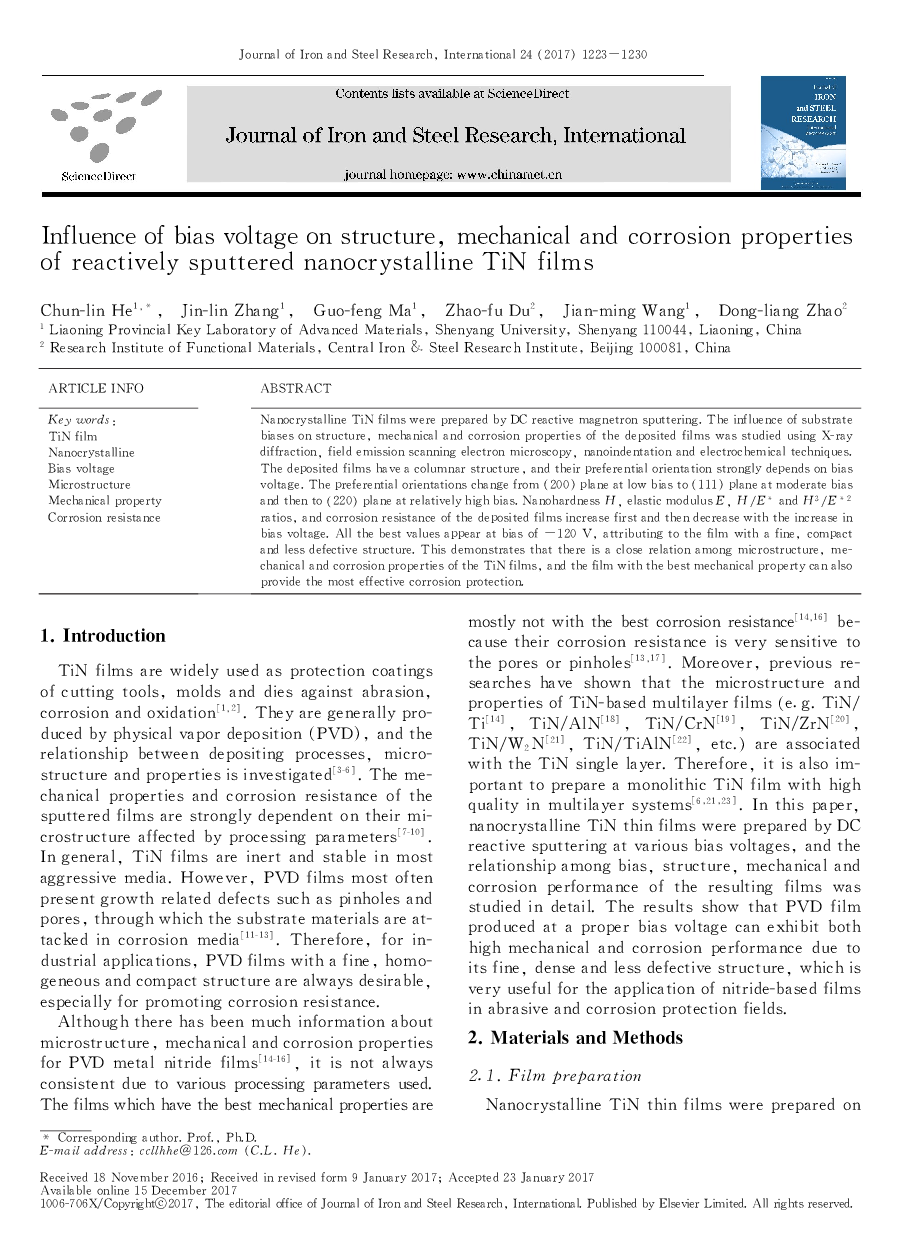| Article ID | Journal | Published Year | Pages | File Type |
|---|---|---|---|---|
| 8004132 | Journal of Iron and Steel Research, International | 2017 | 8 Pages |
Abstract
Nanocrystalline TiN films were prepared by DC reactive magnetron sputtering. The influence of substrate biases on structure, mechanical and corrosion properties of the deposited films was studied using X-ray diffraction, field emission scanning electron microscopy, nanoindentation and electrochemical techniques. The deposited films have a columnar structure, and their preferential orientation strongly depends on bias voltage. The preferential orientations change from (200) plane at low bias to (111) plane at moderate bias and then to (220) plane at relatively high bias. Nanohardness H, elastic modulus E, H/E* and H3/E*2 ratios, and corrosion resistance of the deposited films increase first and then decrease with the increase in bias voltage. All the best values appear at bias of â120 V, attributing to the film with a fine, compact and less defective structure. This demonstrates that there is a close relation among microstructure, mechanical and corrosion properties of the TiN films, and the film with the best mechanical property can also provide the most effective corrosion protection.
Related Topics
Physical Sciences and Engineering
Materials Science
Metals and Alloys
Authors
Chun-lin He, Jin-lin Zhang, Guo-feng Ma, Zhao-fu Du, Jian-ming Wang, Dong-liang Zhao,
